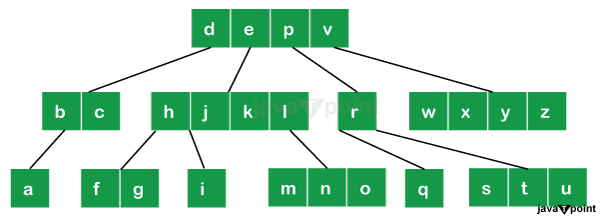Multiway Trees in Data Structures
Introduction:
In computer science and information technology, multiway trees-also referred to as multi-ary trees or generic trees-are a fundamental type of data structure. They offer a flexible approach to describe hierarchical structures and are used in a variety of contexts, including file systems, databases, and parser trees. We shall examine the idea of multiway trees, their attributes, types, operations, and importance in data structures in this article.

Characteristics of Multiway Trees:
A tree data structure called a multiway tree allows each node to have several offspring. Multiway trees can have a variety of child nodes, as opposed to binary trees, where each node can only have a maximum of two children. They are ideal for modeling intricate hierarchical relationships because of their flexibility.
Multiway trees key characteristics include:
- Node Structure: Each node in a multiway tree has numerous pointers pointing to the nodes that are its children. From node to node, the number of pointers may differ.
- Root Node: The root node, from which all other nodes can be accessed, is the node that acts as the tree's origin.
- Leaf Nodes: Nodes with no children are known as leaf nodes. Leaf nodes in a multiway tree can have any number of children, even zero.
- Height and Depth: Multiway trees have height (the maximum depth of the tree) and depth (the distance from the root to a node). The depth and height of the tree might vary substantially due to the different number of children.
Types of Multiway Trees:
Multiway trees come in a variety of forms, each with particular properties and uses. The most typical varieties include:
- General Multiway Trees: Each node in these trees is allowed to have an unlimited number of offspring. They are utilized in a broad variety of applications, such as company organizational hierarchies and directory structures in file systems.
- B-trees: In file systems and databases, B-trees are a sort of self-balancing multiway tree. They are effective for insertions, deletions, and searches because they are made to preserve a balanced structure.
- Ternary Trees: A particular variety of multiway trees in which each node has precisely three children is known as a ternary tree. They are frequently incorporated into optimization and language processing methods.
- Quad Trees and Oct Trees: These are two examples of specialized multiway trees used in geographic information systems and computer graphics for spatial segmentation and indexing. Oct trees have eight children per node, compared to quad trees' four.
Operations on Multiway Trees:
Multiple operations are supported by multiway trees, allowing for effective data modification and retrieval. The following are a few examples of basic operations:
- Insertion: Adding a new node to the tree while making sure it preserves the structure and characteristics of the tree.
- Deletion: A node is deleted from the tree while still preserving its integrity.
- Search: Finding a particular node or value within the tree using search.
- Traversal: Traversal is the process of going through every node in the tree in a particular order, such as pre-order, in-order, or post-order.
- Balancing (for B-trees): To maintain quick search and retrieval times, balancing (for B-trees) involves making sure the tree maintains its balance after insertions and deletions.
Significance of Multiway Trees:
For the following reasons, multiway trees are very important in data structures and computer science.
- Versatility: Multiway trees are useful for a wide range of applications because they offer a versatile way to describe hierarchical relationships.
- Efficiency: For managing and organizing massive datasets in databases and file systems, certain varieties of multiway trees, such as B-trees, are built for efficiency.
- Parsing and Syntax Trees: Multiway trees are crucial for compilers and interpreters because they are utilized in the parsing and syntax analysis of programming languages.
- Spatial Data Structures: Multiway trees, such as quadtrees and oct trees, allow for effective spatial indexing and partitioning in geographic information systems and computer graphics.
Conclusion:
Multiway trees are a flexible and important data structure with a variety of applications, to sum up. In many areas of computer science and information technology, their capacity to describe hierarchical relationships with a variable number of offspring per node makes them useful. Multiway trees are essential tools for deriving solutions to difficult issues and optimizing data manipulation, whether they are employed for effective data storage in databases, parsing in compilers, or spatial partitioning in graphics. Any computer scientist or software engineer dealing with hierarchical data structures must have a solid understanding of their traits, varieties, and operations.
|

 For Videos Join Our Youtube Channel: Join Now
For Videos Join Our Youtube Channel: Join Now










